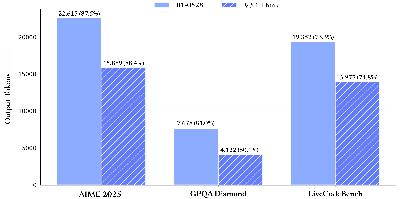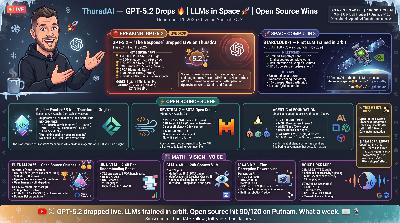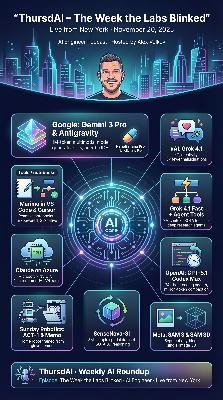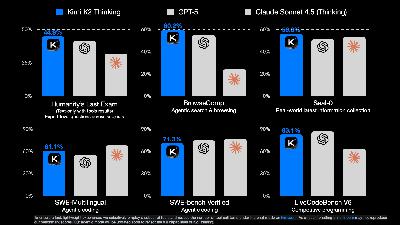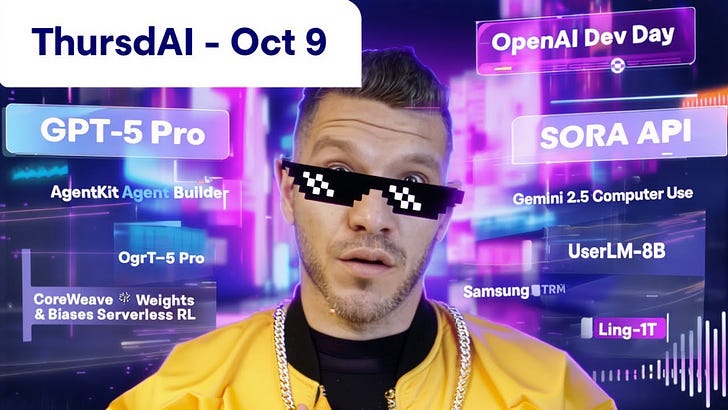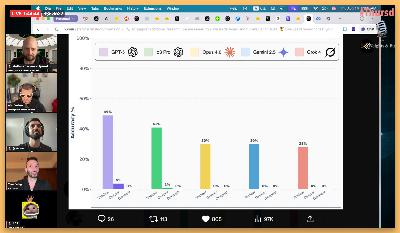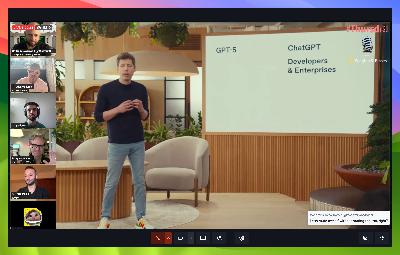📆 ThursdAI - Aug 21 - DeepSeek V3.1’s hybrid upset, ByteDance’s 512K Seed-OSS, Nano Banana wizardry, Agents.md standardizes agents, and more AI
Description
Hey everyone, Alex here 👋
This week looked quiet… until about 15 hours before we went live. Then the floodgates opened: DeepSeek dropped a hybrid V3.1 that beats their own R1 with fewer thinking tokens, ByteDance quietly shipped a 36B Apache-2.0 long-context family with a “thinking budget” knob, NVIDIA pushed a faster mixed-architecture 9B with open training data, and a stealth image editor dubbed “Nano Banana” started doing mind-bending scene edits that feel like a new tier of 3D-aware control.
On the big-co side, a mystery “Sonic” model appeared in Cursor and Cline (spoiler: the function call paths say a lot), and OpenAI introduced Agents.md to stop the config-file explosion in agentic dev tools. We also got a new open desktop-agent RL framework that 4x’d OSWorld SOTA, an IBM + NASA model for solar weather, and Qwen’s fully open 20B image editor that’s shockingly capable and runnable on your own GPU.
Our show today was one of the shortest yet, as I had to drop early to prepare for Burning Man 🔥🕺 Speaking of which, Wolfram and the team will host the next episode!
Ok, let's dive in!
DeepSeek V3.1: a faster hybrid that thinks less, scores more (X, HF)
DeepSeek does this thing where they let a base artifact “leak” onto Hugging Face, and the rumor mill goes into overdrive. Then, hours before we went live, the full V3.1 model card and an instruct variant dropped. The headline: it’s a hybrid reasoner that combines the strengths of their V3 (fast, non-thinking) and R1 (deep, RL-trained thinking), and on many tasks it hits R1-level scores with fewer thinking tokens. In human terms: you get similar or better quality, faster.
A few things I want to call out from the release and early testing:
* Hybrid reasoning mode done right. The model can plan with thinking tokens and then switch to non-thinking execution, so you don’t have to orchestrate two separate models. This alone simplifies agent frameworks: plan with thinking on, execute with thinking off.
* Thinking efficiency is real. DeepSeek shows curves where V3.1 reaches or surpasses R1 with significantly fewer thinking tokens. On AIME’25, for example, R1 clocks 87.5% with ~22k thinking tokens; V3.1 hits ~88.4 with ~15k. On GPQA Diamond, V3.1 basically matches R1 with roughly half the thinking budget.
* Tool-use and search-agent improvements. V3.1 puts tool calls inside the thinking process, instead of doing a monologue and only then calling tools. That’s the pattern you want for multi-turn research agents that iteratively query the web or your internal search.
* Long-context training was scaled up hard. DeepSeek says they increased the 32K extension phase to ~630B tokens, and the 128K phase to ~209B tokens. That’s a big bet on long-context quality at train time, not just inference-time RoPE tricks. The config shows a max position in the 160K range, with folks consistently running it in the 128K class.
* Benchmarks show the coding and terminal agent work got a big push. TerminalBench jumps from a painful 5.7 (R1) to 31 with V3.1. Codeforces ratings are up. On SweBench Verified (non-thinking), V3.1 posts 66 vs R1’s ~44. And you feel it: it’s faster to “get to it” without noodling forever.
* API parity you’ll actually use. Their API now supports the Anthropic-style interface as well, which means a bunch of editor integrations “just work” with minimal glue. If you’re in a Claude-first workflow, you won’t have to rewire the world to try V3.1.
* License and availability. This release is MIT-licensed, and you can grab the base model on Hugging Face. If you prefer hosted, keep an eye on our inference—we’re working to get V3.1 live so you can benchmark without burning your weekend assembling a serving stack.
Hugging Face: https://huggingface.co/deepseek-ai/DeepSeek-V3.1-Base
Quick personal note: I’m seeing a lot of small, pragmatic improvements add up here. If you’re building agents, the hybrid mode plus tighter tool integration is a gift. DeepSeek V3.1 is going to be deployed to W&B Inference service soon! Take a look here to see when it's ready wandb.me/inference
ByteDance Seed-OSS 36B: Apache-2.0, 512K context, and a “thinking budget” knob (X, HF, Github)
I didn’t see much chatter about this one, which is a shame because this seems like a serious release. ByteDance’s Seed team open-sourced a trio of 36B dense models—two Base variants (with and without synthetic data) and an Instruct model—under Apache-2.0, trained on 12T tokens and built for long-context and agentic use. The context window is a native half-million tokens, and they include a “thinking budget” control you can set in 512-token increments so you can trade depth for speed.
They report strong general performance, long-context RULER scores, and solid code/math numbers for a sub-40B model, with the Instruct variant posting very competitive MMLU/MMLU-Pro and LiveCodeBench results. The architecture is a straightforward dense stack (not MoE), and the models ship with Transformers/vLLM support and 4/8-bit quantization ready to go. If you’ve been hunting for a commercial-friendly, long-context 30-something‑B with an explicit reasoning-control dial, this should be on your shortlist.
A neat detail for the training nerds: two Base releases—one trained with synthetic data, one without—make for a rare apples-to-apples study in how synthetic data shapes base capability. Also worth noting: they previously shipped a Seed-Prover specialized for Lean; it looks like the team is interested in tight domain models and generalists.
NVIDIA Nemotron Nano 9B V2: mixed architecture, open data, and long-context throughput (X, Blog, HF, Dataset, Try It)
NVIDIA shipped a fully open release of Nemotron Nano 9B V2—base, base-before-alignment/pruning, and a realigned reasoning model—and, crucially, they published most of the pretraining dataset details (~6.6T tokens across premium web, math, code, and SFT). That level of data transparency is rare and makes this a great base for fine-tuners who want reproducibility.
Under the hood, this is a mixed Mamba+Transformer architecture. NVIDIA is claiming up to 6x higher throughput versus a pure-Transformer peer (they compare to Qwen3-8B) and specifically highlight that they pruned a 12B down to 9B while preserving quality. They also note a single A10 can handle 128K context after compression and distillation passes, which is the kind of practical systems work that matters when you’re running fleets.
A couple of caveats. The license is NVIDIA Open Model License—not Apache-2.0—so read it; it includes restrictions around illegal surveillance and safety bypasses and has revocation clauses. Personally, I appreciate the data openness and the long-context engineering; as always, just make sure the license fits your use case.
If you’re into longer-context math/coding with small models, the numbers (AIME’25, RULER-128K, GPQA) are impressive for 9B. And if you fine-tune: the availability of both pruned and pre-pruned bases plus the dataset recipe is a rare treat.
Cohere’s Command-A Reasoning: dense, multilingual, and research-only licensing (X, Blog, HF)
Cohere Dropped a new reasoning model focused on enterprise deployment patterns. It’s dense 111B model, supports a 256K context, and includes very strong multilingual coverage (23 languages is what they called out). What caught my eye: on the BFCL (Berkeley Function-Calling Leaderboard) they show 70%—above DeepSeek R1’s ~63% and GPT-OSS’s ~61%—and they plot the now-familiar test-time compute curves where more thinking tokens yield higher scores.
This release uses Cohere’s non-commercial research license; if you want commercial usage you’ll need to go through them. That said, for teams who need privately deployable, on-prem reasoning and can work under a research license for prototyping, it’s a serious option. A meta observation from the show: there’s accumulating evidence that more active parameters help multi-hop tool-use chains compared to very sparse MoE at similar effective capacity. This model nudges in that direction.
Desktop agents leap: ComputerRL hits 48% on OSWorld (Paper)
A new framework dubbed ComputerRL from Z.ai and folks at Tsingua Uni, unified API calls with GUI actions and scaled RL across fleets of virtual desktops, posting a 48.1% success rate on OSWorld versus ~12% for earlier open models. The train

